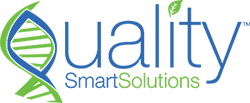
In marketing, the power of persuasive structure-function claims cannot be underestimated. Regarding consumer perception and product sales, structure-function claims have emerged as a force to be reckoned with. These claims, which highlight the benefits and functions of a product, have the potential to captivate consumers and drive them toward making a purchase. But what exactly is it about these claims that makes them so powerful? It all boils down to the psychology of persuasion.
By strategically emphasizing the positive attributes of a product, structure-function claims to tap into the desires and needs of consumers, creating a strong connection between the product and the consumer’s aspirations. This not only influences consumer perception but also directly impacts product sales. This article will delve deeper into structure-function claims, exploring their effectiveness, impact on consumer behavior, and how businesses can leverage them to drive sales and build brand loyalty. Get ready to discover the art of crafting persuasive claims and unlock the true potential of your products. Trust our regulatory specialists if you’d like expert regulatory assistance with these and various health claims.
If you’ve ever picked up a supplement or health product and saw a claim like “supports healthy joints” or “boosts immune function,” you may have wondered if these statements are regulated. The answer is yes, they are. The FDA regulates structure-function claims, which describe the role of a nutrient or ingredient in maintaining normal structure or function in the body. However, the rules and guidelines for making these claims can be confusing, and companies often need to push the boundaries to make their products sound more appealing to consumers. In this article, we’ll dive into everything you need to know about structure-function claims, including what they are, how they’re regulated, and what to look for when shopping for supplements and health products. So, whether you’re a consumer trying to make informed decisions or a marketer navigating the regulations, this article is for you.
Understanding the regulations and guidelines for structure-function claims
When making structure-function claims, businesses must navigate the complex landscape of regulations and guidelines. For example, the U.S. Food and Drug Administration (FDA) has specific rules to ensure that claims are truthful and not misleading. These regulations require that structure-function claims be supported by scientific evidence and not overstate the benefits of a product. Businesses must familiarize themselves with these guidelines to avoid legal issues and maintain consumer credibility.
However, it’s worth noting that regulations regarding structure-function claims can vary from country to country. Businesses operating internationally must know the specific regulations in each market they target. Navigating the various regulations can be challenging, but staying informed and compliant is crucial to building trust with consumers and avoiding potential legal consequences.
What are structure-function claims?
Structure-function claims are statements made on labeling dietary supplements or foods that describe the role of a nutrient or ingredient in maintaining normal structure or function in the body. For example, a structure-function claim might state that a particular nutrient “supports healthy joint function” or “promotes healthy digestion.” These claims differ from health claims, which describe a relationship between a nutrient or food and a disease or health condition.
The FDA allows Structure-function claims as long as they are truthful and not misleading. They must also be accompanied by a disclaimer stating that the product is not intended to diagnose, treat, cure, or prevent any disease.
Structure-function claims can be a powerful marketing tool for supplement and food companies. They allow companies to claim their products’ benefits without going through the rigorous approval process required for health claims. However, companies must be careful not to overstate their products’ help or make claims not supported by scientific evidence.
What are the benefits of structure-function claims?
Structure-function claims can be beneficial for both consumers and manufacturers.
For consumers, structure-function claims can provide helpful information about the role of a nutrient or ingredient in maintaining normal structure or function in the body. This can help consumers decide which supplements or foods to purchase.
For manufacturers, structure-function claims can be a powerful marketing tool. They allow companies to claim their products’ benefits without going through the rigorous approval process required for health claims. This can save time and money for manufacturers and will enable them to bring products to market more quickly.
However, structure-function claims must be truthful and not misleading. Companies must have scientific evidence to support their claims and include a disclaimer stating that the product is not intended to diagnose, treat, cure, or prevent any disease.
How are structure-function claims regulated?
The FDA is responsible for regulating structure-function claims on dietary supplements and foods. The agency has established rules and guidelines for making these claims, ensuring they are truthful and not misleading.
In general, structure-function claims must be based on scientific evidence that supports the claim. The evidence must be reliable and relevant to the specific product and claim. Companies must also demonstrate that the product can deliver the claimed benefit to the body.
The FDA also requires that structure-function claims be accompanied by a disclaimer stating that the product is not intended to diagnose, treat, cure, or prevent any disease. This disclaimer must be prominent and visible on the label of the product.
The role of the FDA in regulating structure-function claims
The FDA is responsible for handling structure-function claims on dietary supplements and foods. The agency has established rules and guidelines for making these claims, ensuring they are truthful and not misleading.
The FDA requires that companies have scientific evidence to support their structure function claims. The evidence must be reliable and relevant to the specific product and claim. The agency also requires that companies be able to demonstrate that the product is capable of delivering the claimed benefit to the body.
The FDA has the authority to act against companies that make false or misleading structure-function claims. This can include issuing warning letters, seizing products, and even pursuing legal action.
The FTC’s role in regulating structure-function claims
The Federal Trade Commission (FTC) also has a role in regulating structure-function claims. The FTC is responsible for enforcing truth in advertising laws, prohibiting companies from making false or misleading claims about their products.
The FTC requires that companies have scientific evidence to support their structure function claims. The evidence must be reliable and relevant to the specific product and claim. The agency also requires that companies be able to demonstrate that the product is capable of delivering the claimed benefit to the body.
The FTC has the authority to act against companies that make false or misleading structure-function claims. This can include issuing warning letters, imposing fines, and even pursuing legal action.
The importance of substantiation in structure function claims
Substantiation is the process of providing scientific evidence to support a structure-function claim. Substantiation is important because it helps to ensure that structure-function claims are truthful and not misleading.
Companies must have scientific evidence to support their structure function claims. The evidence must be reliable and relevant to the specific product and claim. Companies must also demonstrate that the product can deliver the claimed benefit to the body.
The FDA and FTC require that companies have substantiation for their structure function claims. Failure to provide substantiation can result in enforcement action by these agencies.
The consequences of making false or misleading structure-function claims
Making false or misleading structure-function claims can have serious consequences for companies. The FDA and FTC have the authority to act against companies that make false or deceptive claims.
Enforcement actions include warning letters, fines, product seizures, and legal action. In addition to these consequences, making false or misleading claims can damage a company’s reputation and erode consumer trust.
Strategies for avoiding regulatory issues with structure-function claims:
Companies can take several steps to prevent regulatory problems with structure-function claims.
First, companies should ensure that their structure-function claims are truthful and not misleading. Claims should be based on reliable scientific evidence relevant to the specific product and claim.
Second, companies should have substantiation for their structure function claims. Substantiation should be rigorous and demonstrate that the product can deliver the claimed benefit to the body.
Third, companies should ensure that their labeling includes the required disclaimer stating that the product is not intended to diagnose, treat, cure, or prevent any disease. The disclaimer should be prominent and visible on the label of the product.
Finally, companies should stay up-to-date on the latest rules and guidelines for making structure-function claims. The FDA and FTC regularly update their guidance in this area, and companies should be aware of any changes that may affect their products.
Why are Structure-Function Claims important for consumer perception?
Structure-function claims are vital in shaping consumers’ perceptions of a product. When consumers come across a structure-function claim, they are immediately drawn to the potential benefits and functions being highlighted. This creates a positive association with the product, making it more desirable in the eyes of the consumer.
Psychologically, structure-function claims tap into the desires and needs of consumers. They speak directly to the problems or desires that consumers are looking to solve or fulfill. For example, a skincare product claiming to “reduce the appearance of wrinkles and improve skin elasticity” appeals to consumers seeking to maintain youthful-looking skin. By creating a connection between the product and the consumer’s aspirations, structure-function claims have a powerful impact on consumer perception.
How do structure-function claims impact product sales?
The impact of structure-function claims on product sales must be balanced. These claims can persuade consumers and drive them toward making a purchase. Consumers are likelier to buy when they believe a product can deliver the promised benefits.
Research has shown that structure-function claims can significantly influence consumer behavior. A Journal of Consumer Research study found that consumers are likelier to choose products with structure-function claims over those without. The study also revealed that consumers are willing to pay a premium for products that make strong structure-function claims.
This highlights the importance of crafting effective structure-function claims that resonate with consumers. By strategically emphasizing the positive attributes of a product, businesses can tap into the psychology of persuasion and create a strong desire in consumers to own the product. This ultimately leads to increased product sales and revenue for businesses.
Why are Structure Function Claims important in Marketing?
In today’s competitive marketplace, consumers have many product options. With so much noise, brands must differentiate themselves and effectively communicate the unique benefits of their offerings. This is where structure-function claims come into play.
By incorporating structure-function claims into marketing strategies, brands can highlight the specific ways their products support the body’s structure or function. These claims are powerful tools to capture consumers’ attention, build brand awareness, and drive purchasing decisions. In an age where consumers are increasingly conscious of their health and well-being, structure-function claims provide a compelling reason to choose one product over another.
Tips for creating effective structure-function claims

Crafting effective structure-function claims requires careful consideration and strategic thinking. Here are some tips to help businesses create compelling claims that capture the attention of consumers:
- Understand your target audience: Before creating structure-function claims, it’s essential to have a deep understanding of your target audience. What are their needs, desires, and pain points? By tapping into these insights, you can create claims directly addressing their concerns.
- Be specific and measurable: Structure-function claims should be clear and measurable. Avoid vague or general statements and instead focus on quantifiable benefits. For example, instead of saying “improves skin health,” a more effective claim would be “reduces acne by 50% within four weeks.”
- Provide supporting evidence: Backing up your claims with scientific evidence or testimonials adds credibility and builds consumer trust. Conduct research or gather customer feedback to support your structure-function claims.
- Test and refine: It’s important to test the effectiveness of your structure-function claims and refine them based on feedback and data. Conduct A/B testing or gather consumer feedback to determine which claims resonate the most with your target audience.
By following these tips, businesses can create structure-function claims that capture consumers’ attention and drive them toward making a purchase.
What are the best practices for using structure-function Claims effectively?
It is essential to follow best practices to maximize the impact of structure-function claims in marketing efforts. Firstly, ensure that claims are supported by scientific evidence and comply with legal regulations. Thoroughly research the scientific literature and consult with experts to substantiate the claims.
Secondly, communicate the product’s benefits and how it supports specific body functions or structures. Use simple and concise language to convey the message effectively to consumers.
Thirdly, consider the target audience and their specific needs when crafting structure-function claims. Tailor the messaging to resonate with their desires and concerns, creating a strong emotional connection.
Lastly, continually monitor and evaluate the impact of structure-function claims on consumer perception and purchasing decisions. By analyzing data and feedback, marketers can refine their messaging and optimize the use of structure-function claims for maximum effectiveness.
What are the legal considerations and regulations for Structure Function Claims?
While structure-function claims have the potential to be powerful marketing tools, it is important to navigate the legal landscape carefully. The Food and Drug Administration (FDA) regulates structure-function claims for dietary supplements under the Dietary Supplement Health and Education Act (DSHEA) in the United States.
DSHEA states that structure-function claims must be truthful, not misleading, and based on substantial scientific evidence. Marketers should be aware of the specific regulations regarding structure-function claims and ensure compliance to avoid legal issues and potential damage to brand reputation.
What are some common mistakes to avoid when using structure-function claims?
While structure-function claims can be powerful marketing tools, there are some common mistakes that businesses should avoid:
- Overstating claims: Exaggerating or overstating the benefits of a product can lead to legal issues and damage the reputation of a business. It’s important to ensure that structure-function claims are truthful and supported by scientific evidence.
- Failing to comply with regulations: Ignoring or misunderstanding regulations regarding structure-function claims can have serious consequences. It’s crucial to stay informed and comply with the guidelines set by regulatory bodies such as the FDA.
- Lack of transparency: Consumers value transparency regarding structure-function claims. Failing to provide clear and honest information about the benefits and functions of a product can erode trust and credibility.
By avoiding these common mistakes, businesses can harness the true power of structure-function claims and build a strong connection with consumers.
How do transparent structure-function claims build consumer trust?
Transparency is key when it comes to structure-function claims. Consumers want to know exactly what they get when purchasing a product. By providing clear and accurate information about the benefits and functions of a product, businesses can build trust and loyalty with consumers.
One way to be transparent is by providing detailed product information on packaging, websites, and marketing materials. Communicate the specific benefits and functions of the product, along with any supporting evidence or testimonials. This level of transparency instills confidence in consumers. It reassures them that the structure-function claims are backed by reliable information.
Another way to build trust is by actively engaging with consumers and addressing any questions or concerns they may have. This can be done through social media, customer support channels, or by incorporating customer reviews and testimonials into marketing materials. By being responsive and transparent, businesses can foster a sense of trust and loyalty with their customers.
Conclusion: Harnessing the power of structure-function claims for business success
In conclusion, structure-function claims can shape consumer perception and drive product sales. By strategically emphasizing the benefits and functions of a product, businesses can tap into the desires and needs of consumers, creating a strong connection between the product and the consumer’s aspirations.
Understanding the regulations and guidelines for structure-function claims is essential to avoid legal issues and maintain credibility. Effective affirmations that resonate with consumers require careful consideration, transparency, and supporting evidence. By avoiding common mistakes and building trust through transparent claims, businesses can harness the true power of structure-function claims.
As consumer preferences continue to evolve, the future of structure-function claims in the Industry is promising. By staying informed and adapting to changes in regulations and advancements in technology, businesses can continue to leverage the power of structure-function claims to drive sales, build brand loyalty, and unlock the true potential of their products.




 The FDA’s decision to phase out petroleum-based synthetic dyes is poised to bring major change to food manufacturers across the United States. Announced on April 22, 2025, this update affects a broad range of products and signals a shift toward cleaner, safer food ingredients.
The FDA’s decision to phase out petroleum-based synthetic dyes is poised to bring major change to food manufacturers across the United States. Announced on April 22, 2025, this update affects a broad range of products and signals a shift toward cleaner, safer food ingredients.

 Health Canada has released a
Health Canada has released a 
 Selling cosmetics in Canada? If you’re a brand outside of Canada, there’s an important update you need to know about. As of March 1, 2025, Health Canada requires that all Cosmetic Notification Forms (CNFs) include a Canadian Agent.
Selling cosmetics in Canada? If you’re a brand outside of Canada, there’s an important update you need to know about. As of March 1, 2025, Health Canada requires that all Cosmetic Notification Forms (CNFs) include a Canadian Agent.
 Submitting a medical device to the FDA can feel like navigating a maze. Even the most seasoned teams can overlook a small detail that derails the entire process, delaying market access by months.
Submitting a medical device to the FDA can feel like navigating a maze. Even the most seasoned teams can overlook a small detail that derails the entire process, delaying market access by months.
 Introduction
Introduction




 Are Your Supplemental Ingredients Compliant? Canada’s New Rules Explained
Are Your Supplemental Ingredients Compliant? Canada’s New Rules Explained


 GRAS in pet food – these four words can make a big difference in your product’s regulatory status. Understanding what GRAS designation means and how it impacts your pet food formulations is essential for navigating the complex world of animal feed regulations.
GRAS in pet food – these four words can make a big difference in your product’s regulatory status. Understanding what GRAS designation means and how it impacts your pet food formulations is essential for navigating the complex world of animal feed regulations. 
 The introduction of Bill 96 in Quebec brings new challenges for businesses across Canada. As a result, this legislation emphasizes the importance of the French language and enforces stricter rules for bilingual labelling.
The introduction of Bill 96 in Quebec brings new challenges for businesses across Canada. As a result, this legislation emphasizes the importance of the French language and enforces stricter rules for bilingual labelling. 


 The FDA has just announced a
The FDA has just announced a
 The FDA’s proposed front-of-package (FOP) nutrition labeling rule introduces significant changes to how nutritional information is displayed. This proposal reflects growing efforts to address public health concerns, such as obesity and chronic diseases, by encouraging informed food choices.
The FDA’s proposed front-of-package (FOP) nutrition labeling rule introduces significant changes to how nutritional information is displayed. This proposal reflects growing efforts to address public health concerns, such as obesity and chronic diseases, by encouraging informed food choices.

 Navigating Health Canada’s rules for probiotic health claims can feel overwhelming, especially with the growing demand for these products. Businesses in the food and health product industries often struggle to understand the complexities of these regulations. However, ensuring compliance is essential for protecting your business and gaining consumer trust.
Navigating Health Canada’s rules for probiotic health claims can feel overwhelming, especially with the growing demand for these products. Businesses in the food and health product industries often struggle to understand the complexities of these regulations. However, ensuring compliance is essential for protecting your business and gaining consumer trust.

 The FDA has finalized its updated definition for the “Healthy” nutrient content claim, aiming to promote better transparency in food labeling and encourage healthier eating habits. This move is part of a broader initiative to improve public health by helping consumers make informed decisions.
The FDA has finalized its updated definition for the “Healthy” nutrient content claim, aiming to promote better transparency in food labeling and encourage healthier eating habits. This move is part of a broader initiative to improve public health by helping consumers make informed decisions.








 If you’re planning to bring veterinary health products (VHPs) into Canada, you’ve probably come across the terms VHP Canadian representative and VHP Importer of Record. Sounds technical, right? But don’t worry, it’s not as complicated as it seems! These roles may sound similar, but they have distinct responsibilities that are essential to your success in the Canadian market.
If you’re planning to bring veterinary health products (VHPs) into Canada, you’ve probably come across the terms VHP Canadian representative and VHP Importer of Record. Sounds technical, right? But don’t worry, it’s not as complicated as it seems! These roles may sound similar, but they have distinct responsibilities that are essential to your success in the Canadian market.
 Are you prepared for changes to Health Canada’s regulations on infant formulas and dietary products? The Interim Policy on Importation and Sale ends on December 31, 2024. To ensure compliance and long-term availability, you need to align your products with the Food and Drugs Regulations (FDR). Let’s explore what this means and how you can adapt.
Are you prepared for changes to Health Canada’s regulations on infant formulas and dietary products? The Interim Policy on Importation and Sale ends on December 31, 2024. To ensure compliance and long-term availability, you need to align your products with the Food and Drugs Regulations (FDR). Let’s explore what this means and how you can adapt.
 Selling natural health products (NHPs) on Amazon Canada is a lucrative opportunity to expand your business and reach millions of potential customers. However, navigating the process requires understanding and adhering to Canadian regulations, as well as Amazon’s specific policies for NHPs.
Selling natural health products (NHPs) on Amazon Canada is a lucrative opportunity to expand your business and reach millions of potential customers. However, navigating the process requires understanding and adhering to Canadian regulations, as well as Amazon’s specific policies for NHPs.






